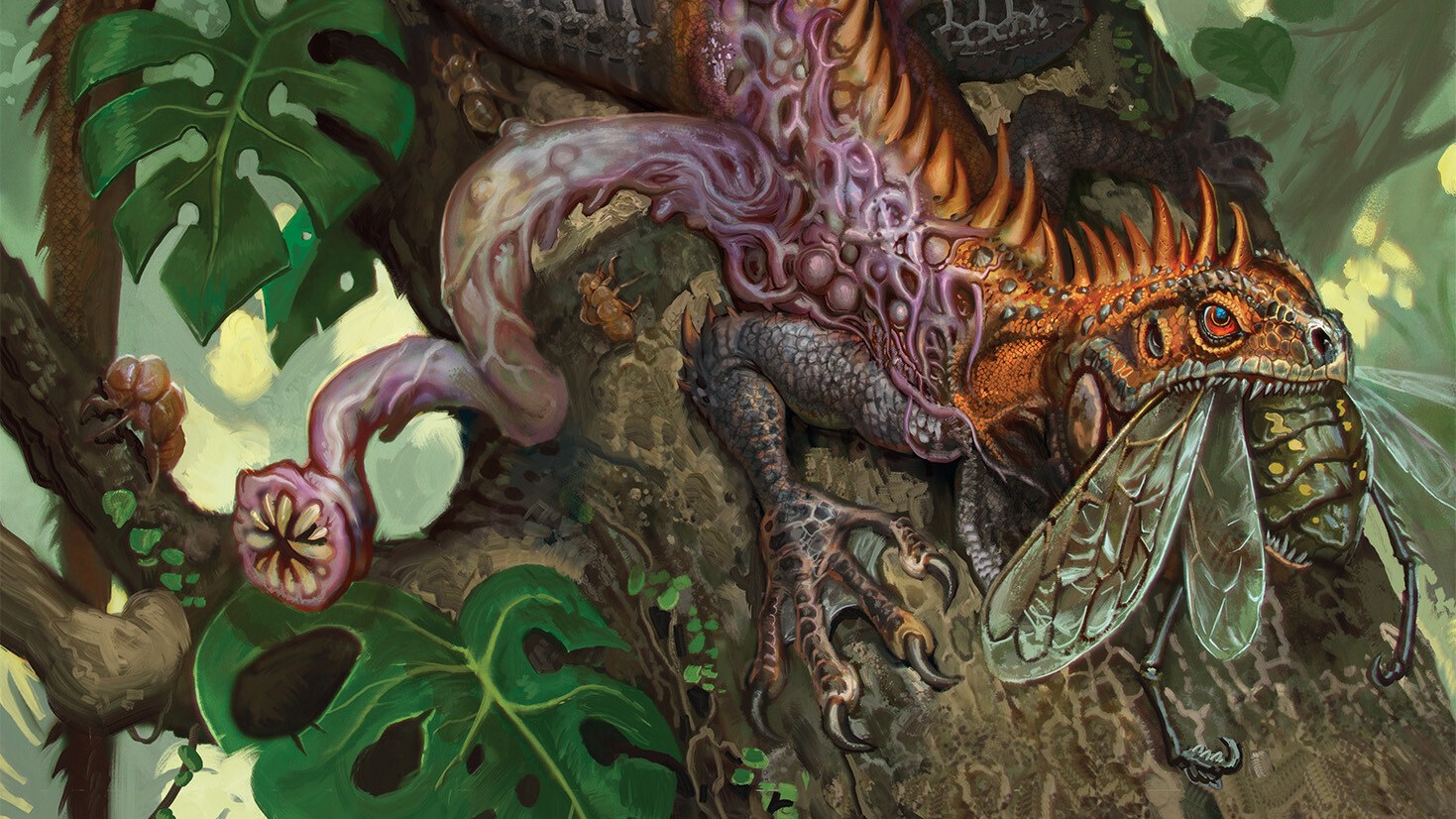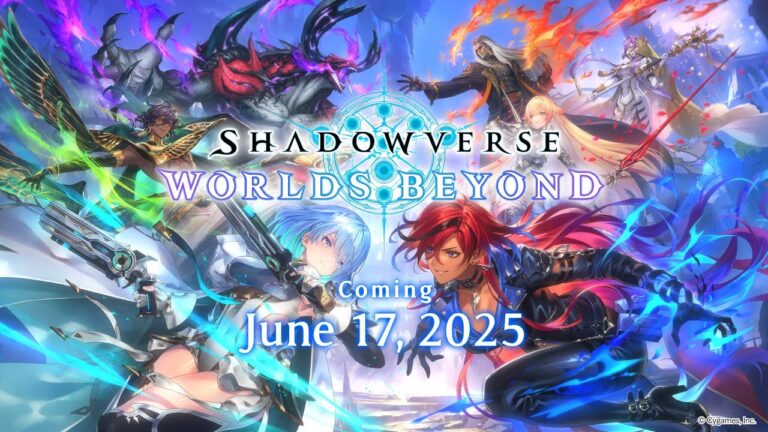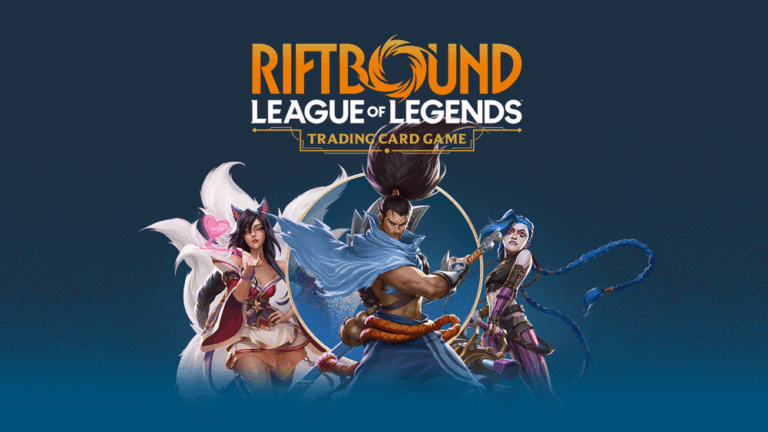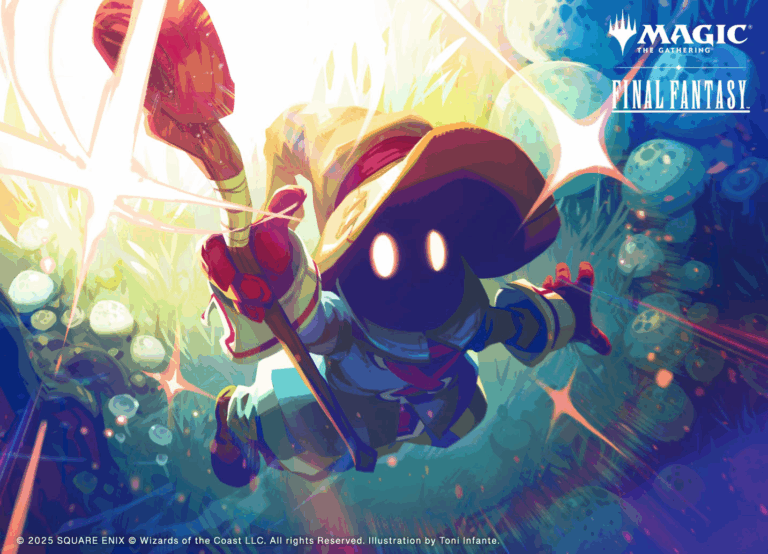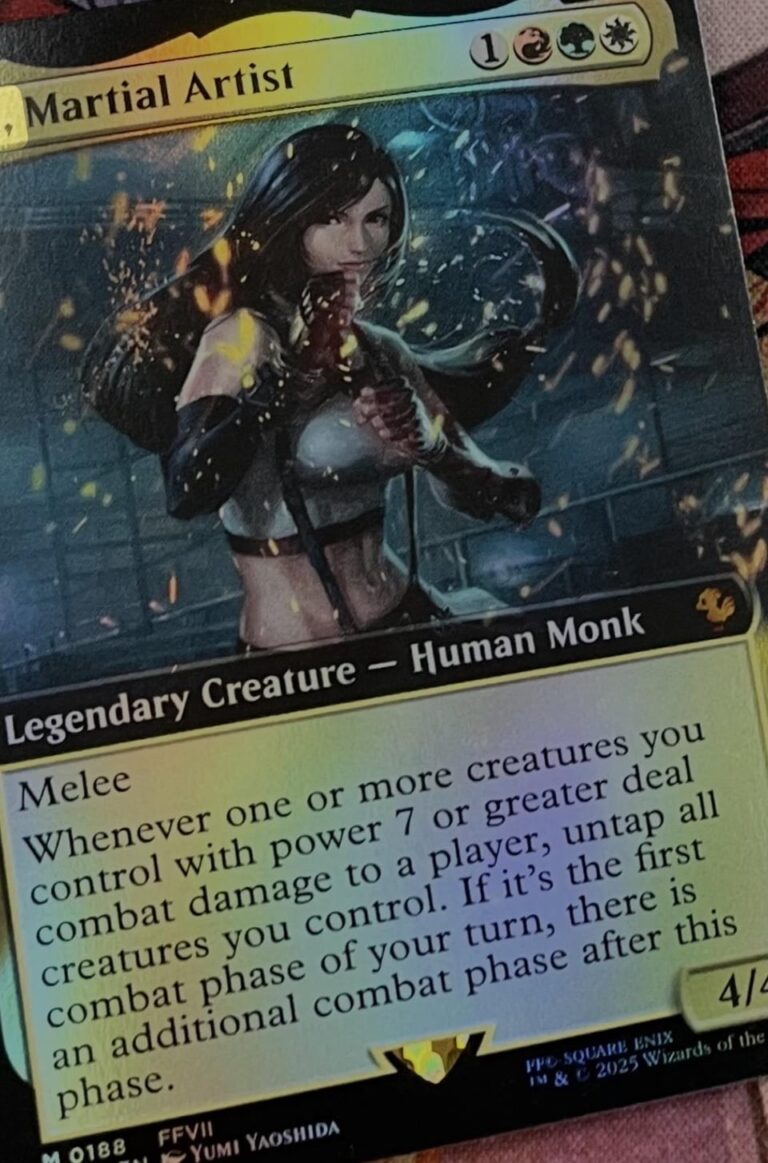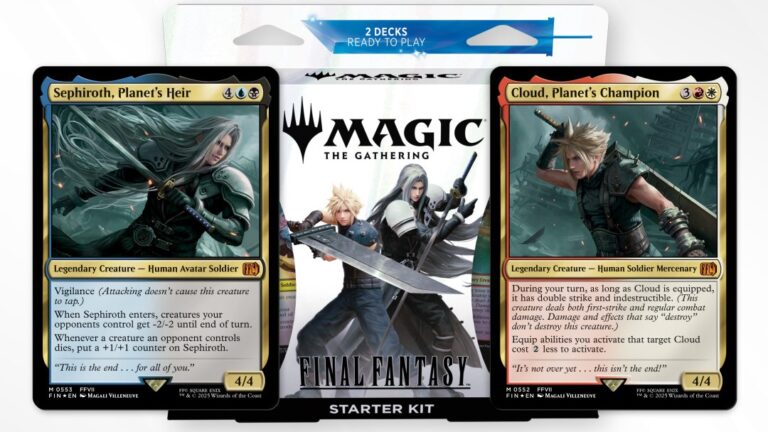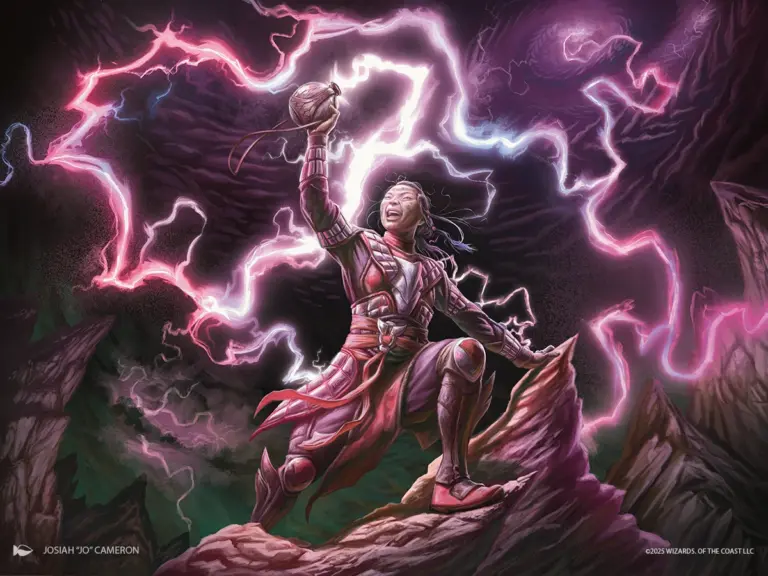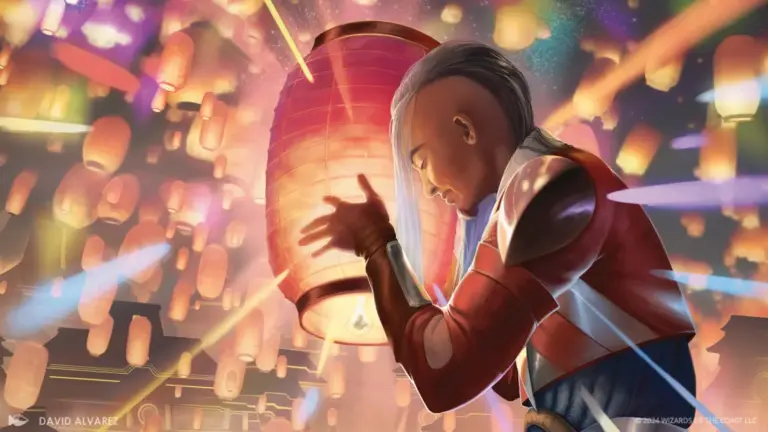Wizards of the Coast has finalized their scheduled Banned and Restricted Announcement. MTG Arena is not affected by the changes: Modern, Legacy, and Pauper will have cards banned and unbanned effective March 31, 2025.
Announcement Date: March 31, 2025
Standard:
- No changes
Pioneer:
- No changes
Modern:
- Underworld Breach is banned.
Legacy:
- Sowing Mycospawn is banned.
- Troll of Khazad-dûm is banned.
Vintage:
- No changes
Pauper:
- Basking Broodscale is banned.
- Kuldotha Rebirth is banned.
- Deadly Dispute is banned.
- Prophetic Prism is unbanned.
- High Tide is unbanned.
Alchemy:
- No changes
Explorer:
- No changes
Historic:
- No changes
Timeless:
- No changes
Brawl:
- No changes
Effective Date: March 31, 2025
View the list of all banned and restricted cards by format.
Howdy, gamers!
My name is Carmen Klomparens, and I'm a senior game designer on Magic's Play Design team. Welcome to the first banned and restricted announcement of 2025! The last update to the banned and restricted list saw a ton of changes to the landscape of nonrotating Magic formats, and this update is the next step in keeping those formats fun. Between a round of Modern Regional Championships, broad shifts within the Legacy metagame, and Pauper's narrowing metagame, there's a lot here to sink our teeth into.
As usual, we'll be on WeeklyMTG on twitch.tv/magic tomorrow, April 1, at 10 a.m. PT to discuss these changes.
To jump to our discussion of a particular format, click below.
Standard
Written by Jadine Klomparens
- No changes
Standard is flourishing, and there are no changes to the format with this announcement. Our approach to Standard banned and restricted updates remains unchanged; we are committed to leaving the format as untouched as possible from one rotation to the next, banning cards only if something truly problematic to the health of the format emerges. Once a year, right before rotation, we'll consider more nuanced changes with the goal of making the format as fun and dynamic as possible for the duration of the next rotation cycle. We aren't to that once-a-year moment yet, and both Tarkir: Dragonstorm and Magic: The Gathering®—FINAL FANTASY™ will have a chance to make their mark on Standard before the format rotates with Edge of Eternities.
Standard was on display at Pro Tour Aetherdrift, which showcased a rich and diverse metagame. The big three of Standard have been clearly identified, with Gruul Mice, Esper Pixie, and Domain Overlords being the most popular strategies. Despite this definition at the top of the metagame, those three decks represented only half the field, and the other half was wide open. There's a chance for success with almost any style of deck imaginable right now in Standard, which is very cool to see. Domain Overlords ended up taking down the Pro Tour and looked dominant all weekend, but since then, it has seen its win rate slowly decline as the metagame adjusts.
One of the most exciting aspects of this Standard format is the degree to which it continues to evolve, even between set releases. The self-bounce synergy decks featuring Nurturing Pixie and/or This Town Ain't Big Enough are a well-known pillar of Standard now but weren't popular until over a month after the release of Magic The Gathering: Foundations—despite the fact that the shell of this deck existed in the format ever since the release of Duskmourn: House of Horror.
With Tarkir: Dragonstorm and Magic: The Gathering—FINAL FANTASY on the horizon, it's going to be fascinating to watch the journey of this Standard format. I'm very excited to see what players do with these cards and what new decks and strategies emerge.
Pioneer
Written by Arya Karamchandani
- No changes
We have continued to keep a close eye on Pioneer since our last banned and restricted announcement and have been happy with both deck diversity and the representation of different macro-archetypes in the format.
There's been a healthy amount of churn in the Pioneer metagame over the last several months, with cards from the last year continuing to make a splash across several archetypes. Emberheart Challenger, Manifold Mouse, and Heartfire Hero have been a central part of aggressive decks, mirroring the Standard Mice package. Fear of Missing Out and Unholy Annex // Ritual Chamber have been seeing play in Rakdos midrange shells, changing the way the deck has played and giving it a lot more closing power. Ygra, Eater of All and Scavenger's Talent have created a more combo-centric version of Jund Sacrifice, leaving players with a strong creature combo deck they can play after the Amalia banning. The Overlord cycle out of Duskmourn: House of Horror have reshaped Enigmatic Incarnation as an archetype, letting it become the primary go-big deck of the format. We have also seen several smaller changes to decks, with cards like Artist's Talent in Izzet Phoenix and Valor's Flagship in Greasefang decks providing a little more consistency and strength to existing decks.
Despite the churn, the Pioneer metagame has remained well balanced, with a large variety of play styles viable and no deck or archetype having a problematic win rate or play rate. The metagame continues to evolve as new decks like Dimir Bounce make their way into the format. We will continue to monitor the metagame as it develops, but at this time, we are happy with the state of Pioneer and have no changes to the format.
Modern
Written by Carmen Klomparens
- Underworld Breach is banned.
To echo a point from the opening of the article, December's update to the Modern banned list did a lot to breathe new life into the format. We've seen Mox Opal, Green Sun's Zenith, and Faithless Looting show up in a bunch of decks, to varying degrees of satisfaction from the team here at Wizards. Green Sun's Zenith showing up in Yawgmoth and Amulet Titan combo decks was something we anticipated and were happy with. Faithless Looting breathing new life into proactive graveyard-centric decks like Hollow One is also great. However, Mox Opal teaming up with Underworld Breach to create an explosive and resilient combo deck is not something we're happy with.
To give a bit more context, the last couple of months has seen a ton of experimentation with different ways to play with new tools in the format, but over time, it has become increasingly apparent that the strongest thing to do in Modern is play a Temur Grinding Breach combo deck. The deck uses the combination of Underworld Breach and Grinding Station in conjunction with a zero-mana artifact to mill its library three cards at a time before winning with a card like Thassa's Oracle or Grapeshot. The deck is notoriously resistant to graveyard and artifact hate by virtue of its ability to diversify its threats, which made it uniquely difficult to overcome in sideboarding. Between that resiliency and its explosiveness—with it being able to win as early as the first turn—we're confident that it's time to send Breach back to the underworld.
With the amount of pressure that Underworld Breach put on the format, we expect the format to change a good bit with its departure, especially sideboards. Previously, we saw players committing well over half of their sideboard to try and suppress the combo, but now we're optimistic that the format can open up a bit and allow for a wider range of strategies to exist. Looking past Temur Grinding Breach, Modern looks pretty good.
A bunch of different decks are showing up, with Orzhov Blink making a name for itself over the last few weeks. Aetherdrift has made a major impact to the format, with Ketramose, the New Dawn making its way into the aforementioned Blink decks, Marauding Mako showing up in Hollow One decks, and Stock Up showing up in blue decks that are looking to play a longer game.
We're planning on keeping an eye on the decks that were strong enough to hang despite Temur Grinding Breach's prevalence: Boros Energy decks and Dimir Oculus decks, as well as Eldrazi variants, Amulet Titan, and the Orzhov Blink deck. We're watching Red-White Energy variants the closest to see if reasonable counterplay emerges in the coming Regional Championship Qualifier season, and we're excited to see what players cook up.
Legacy
Written by Carmen Klomparens
- Troll of Khazad-dûm is banned.
- Sowing Mycospawn is banned.
By the numbers, the Legacy of today does a good job of emulating a balanced format. The most played deck, Dimir Reanimator, isn't taking too large of a piece of the pie, and the next handful of decks consistently showing up aren't doing so at clips that are wildly out of bounds. The issue is that, despite having several different decks, the format's slower macro-archetypes, like midrange and control, have largely been pushed out of the metagame as environmental pressures have wildly condensed the games. Further, player sentiment and event attendance has trended downward. It's apparent to us that people who love to play Legacy do not love to play today's Legacy, so we're taking a couple of steps to try and improve the format.
Troll of Khazad-dûm has been a big part of Legacy for almost two years now, with some form of Dimir Reanimator being the strongest deck in the format since approximately the release of The Lord of the Rings: Tales of Middle-earth™. It has an extremely unique impact on deck building, allowing players to fill their deck with cards like Reanimate and Animate Dead without having to play a bunch of big creatures that might otherwise be dead cards in their hand or playing as many discard cards as possible to get big creatures into their graveyard. This subversion of opportunity costs has meant that Reanimator has been exceptional at playing a fair game while threatening an intensely unfair game for the better part of two years now. We believe that the Reanimator strategy is a core part of what makes Legacy feel like Legacy and is fun to have in the format. We've learned that the deck is more fun and less frustrating to play against when it must be a more committal synergy deck that isn't afforded the luxury of straddling the line between a tempo-y aggro deck and a combo deck. For that reason, Troll of Khazad-dûm is banned.
On the other side of format speed, Eldrazi and other colorless strategies have been prevalent in Legacy since they got a boost from Modern Horizons 3 last summer. Generally speaking, these decks have presented the issue of completely sidestepping the rules of engagement in the format, making them extremely hard to interact with. Last December, the strongest version of this strategy was using Vexing Bauble as insulation against cheap spell interaction for a fast combo, but now, colorless strategies have positioned themselves to have the best inevitability in the format, with a good chunk of that inevitability coming from a single card.
Sowing Mycospawn does it all in the context of colorless Eldrazi; it can grab late-game cards like Eye of Ugin and some interactive lands like Blast Zone or Karakas, but most frequently, it is grabbing copies of Wasteland to exacerbate the strength of its land-exiling effect. That land-exiling effect can notably target basic lands, which is a class of card that is more fun when it's a reliable out to other land-hating cards in the format like Wasteland and Blood Moon. Sowing Mycospawn is so good at attacking lands, often two at a time and even hitting basic lands, that it has caused environmental pressures on the format, compressing games to the first handful of turns and putting the Magic play experience at risk. For these environmental reasons, as well as the violation of format heuristics, Sowing Mycospawn is banned.
In the coming weeks, we'll be keeping an eye on the prevalence and win rates of the various all-in combo and fast-mana decks that bubbled to the surface of Legacy. Blood Moon Stompy and Oops! All Spells are prime examples of decks that have seen their meta share rise in the past few months with the density of modal double-faced land cards in Modern Horizons 3, both currently within bounds of play rates and win rates that have been historically acceptable. Ideally, the above changes will create space for more counterplay against these decks over time.
Vintage
Written by Eric Engelhard
- No changes
There are no changes to Vintage with this announcement, but there was much discussion about one card and its place in Vintage. That card is Lurrus of the Dream-Den.
Last August, we restricted Urza's Saga for a few reasons, one of which was the hope that it would reduce Lurrus's prevalence in the format by weakening decks looking to utilize a toolbox of cheap artifacts. While Lurrus Saga decks are essentially gone and the diversity of Lurrus decks has increased, the metagame share of the card Lurrus of the Dream-Den has also increased over time.
Lurrus was banned before for nine months in 2020–2021 under the original companion rule. It was the only power-level ban that Vintage had seen in many decades but felt necessary at the time. Once the companion rule was updated, we unbanned Lurrus in the Vintage spirit of keeping as many cards as possible legal. At the time, we said it was an experiment, and one we'd be willing to revert if necessary.
We had the discussion about whether this was still true. The short answer is yes—if Lurrus becomes a significant enough metagame problem, we will ban it. At the moment, however, we are not close to that threshold. That threshold is, of course, fuzzy, but we'd need to see a much staler metagame concentrated around just a few Lurrus builds and an even higher metagame share for Lurrus.
There are cards banned in Vintage—dexterity cards, subgame cards, sticker and Attraction cards, and so on. They are banned in all formats for tournament logistics issues. While the companion mechanic is not (much of) a logistical issue, it has a unique interaction with Vintage and the restricted list. Because of this, banning in Vintage is on the table for a card with the companion mechanic. We won't let the format stagnate to preserve the clarity of a "rule" that already has exceptions.
So, we'll continue to keep an eye on things with Lurrus, both in tournaments and with player sentiment. Overall, the Vintage metagame looks healthy. Based on recent results we've seen, the continuing presence of Lurrus doesn't seem to be stifling overall deck diversity and innovation.
Pauper
- Basking Broodscale is banned.
- Kuldotha Rebirth is banned.
- Deadly Dispute is banned.
- Prophetic Prism is unbanned.
- High Tide is unbanned.
Pauper is banning Basking Broodscale, Deadly Dispute, and Kuldotha Rebirth and is unbanning High Tide and Prophetic Prism. These bans are aimed at removing the Broodscale Combo deck, tuning down the strength of the Ichor Wellspring-sacrifice engine by removing the ubiquitous Deadly Dispute, and taking some power and polarity out of Mono-Red.
For more information, check out the Pauper Format Panel's article about these changes.
Each of the following MTG Arena-only formats will be covered by Dave Finseth.
Alchemy
- No changes
Rebalances play an important role in this format as we dial in cards with more frequent changes. Our last round of rebalance changes looks to have been very successful at pulling the life-gain and heist decks within bounds for the format. Golden Sidekick is playing a more supporting role in the life-gain deck, and Impetuous Lootmonger is no longer the payoff for playing your opponent's cards that it once was. Selesnya Rabbits remains a powerful option for players, even with the additional mana cost added to Buxton, Decorated Host.
New cards from Alchemy: Aetherdrift are also making an impact in the format. Naktamun Shines Again has been a powerful addition to cheap creature decks, while Trackhand Trainer and Ornate Imitations added a splashy new Simic Exhaust archetype to the metagame. We are watching the Grixis Chorus deck, which is showing an impressive win rate since we rebalanced Hymn to the Ages and Ribald Shanty and may make further changes to it in the future.
We expect to continue to leverage rebalances to keep the metagame fresh and balanced. Expect another update during Alchemy: Tarkir's release. We are excited about the variety and competitiveness in Alchemy right now and feel the time is right to run an Arena Championship Qualifier weekend with the format this coming May.
Explorer
- No changes
Since the release of Pioneer Masters, the difference between Explorer and Pioneer has become tiny. We are continuing to monitor the Pioneer competitive metagame for cards not on MTG Arena. Out of 411 distinct competitive Magic Online decklists played in March, only the following cards were missing:
| Card Name | Instances Across Decks |
| Kazuul's Toll Collector | 24 |
| Warping Wail | 6 |
| Battle at the Bridge | 4 |
| Triton Shorestalker | 4 |
| Nissa's Defeat | 3 |
| Encroaching Wastes | 2 |
| Roast | 2 |
We are exploring new ways to add competitive Pioneer cards like these to MTG Arena.
Historic
- No changes
Historic continues to be our most diverse format in MTG Arena, with no deck above five percent of the overall play rate. The format has stayed mostly the same since our last update. One notable change is the rise of a powerful Boros Enchantments deck featuring many Duskmourn: House of Horror cards like Sheltered by Ghosts and Shardmage's Rescue. This deck is now competing with other powerful archetypes like Energy Aggro, Izzet Wizards, Five-Color Omniscience, and monocolor decks like Elves and Goblins.
We are continuing to monitor the strength and speed of the Energy Aggro deck. We have rebalanced a few cards already and will continue to do so if this powerful deck starts to take up too much of the format.
Timeless
- No changes
The largest addition to Timeless has been Chrome Mox, adding a fast mana-ramp option at the cost of a card in your hand. The card saw a lot of play when it was released with Aetherdrift but has since been on the decline as not all decks benefit from the effect.
Chrome Mox and Brightglass Gearhulk have helped push a Birthing Ritual deck to become one of the top-performing options in the format. Early data suggests that this archetype is holding its own against Show and Tell, Charbelcher, and Energy Aggro. It will be exciting to see if it can maintain that performance as counterplays are established in MTG Arena's strongest format.
Brawl
- No changes
Brawl continues to grow on MTG Arena as more players engage with the unique 100-card Singleton format. With each new Alchemy release, we have seen a good uptake of the new commanders giving players more options to build around. Currently, 85% of all Brawl matches give both players a close to 50% chance to win based on their commander choice. We continue to monitor and adjust matchmaking with each release to best match similar decks and commanders together for fun and exciting games of Magic.

